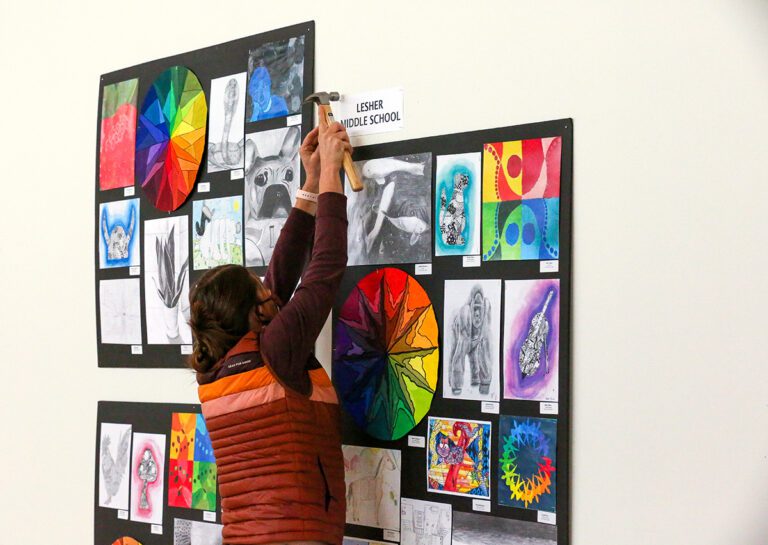This is an article I never expected to write, and one I hope you never need to read. But, the reality is, in our jobs, we will experience the highest highs; inspiring our students to create personal meaning through art. And, life will also force a few of us to suffer the most unimaginable low, the loss of a student.
Nothing can prepare you for an event like this. But, experience does bring a small amount of wisdom; and I hope these words wrap around you like a comforting hug from a friend.

Remove the Pressure to “Say the Right Thing”
In the days after a loss, you will undoubtedly feel personal pressure to provide a tidy explanation to the searching faces looking up at you during class. But, there isn’t one, and it’s nearly impossible to explain something you don’t understand yourself.
My advice is to let go of the impulse to explain, and instead seek to reassure. Let your students know some things don’t change; families still care about one another, communities still rally when times are tough, art still has the power to heal, and you are still there for them as a teacher and a friend.
When they ask you a direct question and you don’t know, just say so. Kids appreciate honesty. And, if all else fails, use a children’s book. The power of art paired with simple prose is sometimes enough to help ease young hearts (and mine as well). I have found, Always Remember by Cece Meng to be of particular comfort.

Be Emotionally Prepared for Second-Hand Grief
Your school’s crisis team will start by asking for the names of students and faculty in the “inner circle.” They are trying to identify people who were the closest to the lost student, and those likely to need additional and ongoing support. During my first experience with loss, I mistakenly thought these were the primary students I needed to support.
But, children’s grief is different from an adult’s in unexpected ways. They are new to loss, and for many students, a loss at school triggers emotions related to previous losses. Students who didn’t know the deceased were profoundly impacted by the situation and began to mourn recently lost grandparents or pets, with genuine grief. This is a typical reaction, and I wish I would have been prepared to see it.
Deeply and Carefully Consider How You Will Handle That Student’s Artwork
You have a responsibility to return all artworks, suddenly even more precious than before, to the family. Be mindful of the ways this could affect them and seek out advice from crisis team members if you are unsure. If the family does not express direct wishes for the artwork, balance your professional obligation with your own needs.
- In one situation, I gathered all of my student’s artwork from around the room during my lunch hour and placed it into a single folder for her family. This act took every ounce of emotional energy I had, and I wasn’t sure I could finish the day.
- In another situation, I consciously chose not to gather his work (because of the previous experience), thinking time might make it easier at the end of the school year. But then, I would accidentally find something in a drawer on a random Tuesday, and lose all of my breath in renewed shock and grief.
There is no right way to proceed, so use your best judgment based on the family and what you know about yourself.
Prioritize Self-Care
As teachers, we are excellent at putting aside our own needs for the sake of our students. We forego bathroom breaks, we stay up extra late perfecting a lesson, or we skip lunch to help a student complete a project.
This is not the time. You may feel strong and capable of managing your own grief in front of your students, but a small trigger can crack the façade and leave you feeling incapable of completing a class.

Talk with a friend, get a full night’s sleep (when possible), eat and drink even when you are not feeling hungry. Prioritize your self-care so you can be fully present for your students. And, if you do feel yourself struggling, reach out as quickly as possible. Most districts have employee assistance plans in place.
When You Are Ready, Lean on the Power of Art to Heal
Not immediately, but sometime down the road, you may want to investigate a collaborative art project to help your community heal. Whether it is a mural, a painted rock garden, or some other type of commemorative artwork, don’t forget the power of our subject area to help people process emotion.
What types of commemorative art projects has your school or district done?
What other advice do you have for dealing with situations of loss in your school?
Magazine articles and podcasts are opinions of professional education contributors and do not necessarily represent the position of the Art of Education University (AOEU) or its academic offerings. Contributors use terms in the way they are most often talked about in the scope of their educational experiences.





